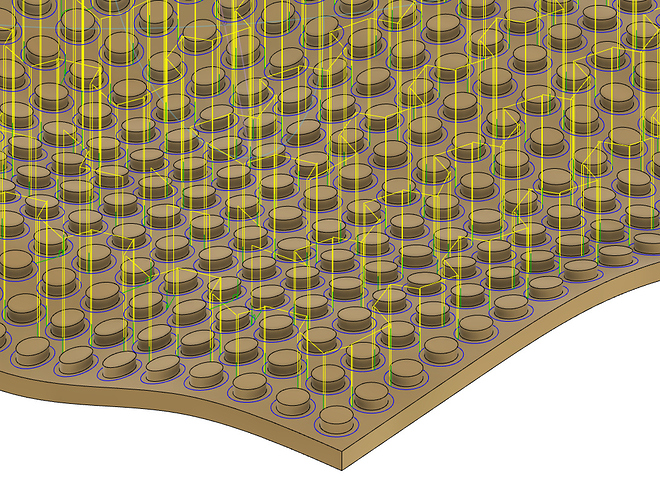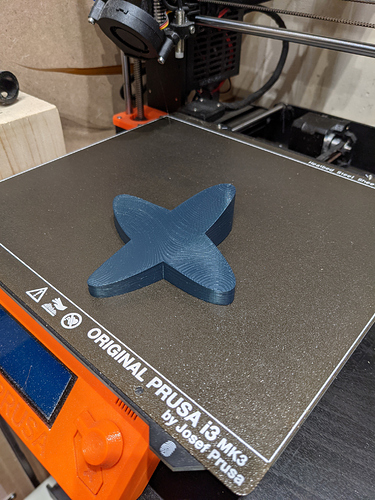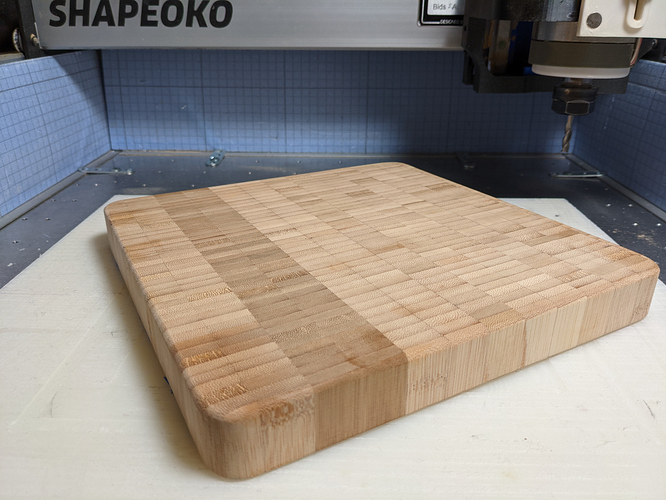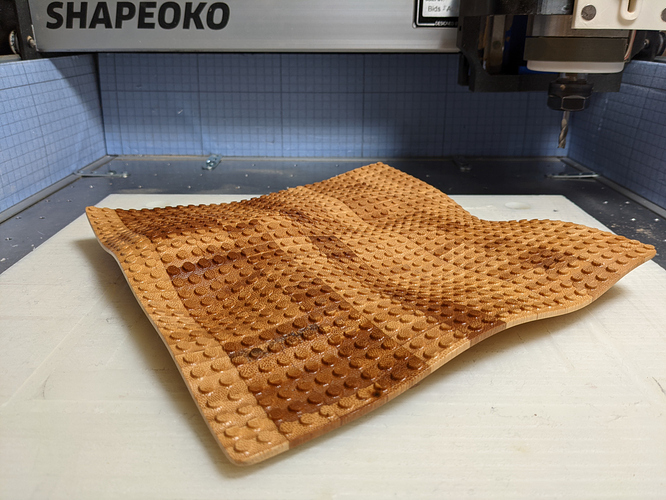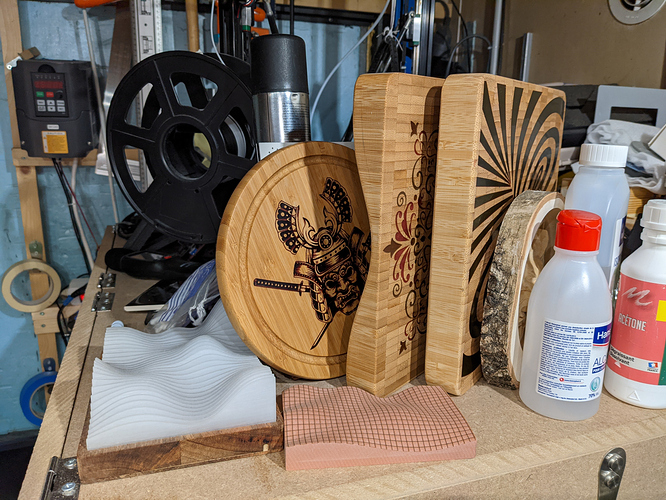Kind of an odd looking trivet, but I like it!
Did you try attaching a Lego Person to it? Love to see that image
Believe it or not, I don’t have any Lego minifigure (or even brick) around.
I was thinking, as part of the ongoing challenge I’ll try to mill a few wooden Lego astronauts.
Mmmh, it turns out the “Pencil” toolpath does exactly what I needed, a single contour pass around each [thing] to clean up the perimeter:
All round and clean now.
What?
Didn’t you want to hand sand around the edge of each bobble?
Well there are 900 of them and I am just one, so that was enough motivation to go through the pain of trying multiple toolpaths settings to find the right one (at 5-minutes-computation a try, it was not fun…I need to get me a new computer someday)
I was determined to help @Julien out with the vernacular, but I think I’m only adding fuel to the fire! ![]()
Here’s the next project;
A few pics before I call it done and move on to milling legoman.
Detaching the piece from the jig was…nerve racking.
I then 3D-printed a small stand, just because I did not feel like milling it and it won’t be visible anyway:
And here are the BEFORE/AFTER shots :
Subtractive manufacturing indeed !
I started looking into carving a Lego minifigure, and this was the opportunity to discover Fusion360’s “manufacturing model”, which is an AWESOME feature. More on this later.
Oh my, I actually laughed out loud, this is good, thank you for brightening a cloudy day. I thought it would only get better by back-translating it to English using Google translate, but shockingly the second round of translation kind of still makes sense:
So, my friends this visit must conclude our last stay with the master of trivetology. We have been privileged witnesses of the very rare and complex work of the school of trivetology MasterClass in Paris. We believe the school is almost famous.
The future of all trivetological endeavors will be, in an attempt to surpass all previous efforts in style, grace, and height (and mystery), just like along with a pen and drawing the mind of MC Escher .
It is hoped that next year will see St Julien recognized for this vital work. We wish him good luck and hope in finally knowing that St Julien has won the coveted Nobel Prize for services to his enduring art of the trivet. (His own poor parents owe hundreds of trivets)
Perhaps he will be inspired by thought and a thousand years, a cave opened by archaeologists will be, for the first time. They will be amazed to see the rows of thousands of trivets, trivets facing each poster with Paris, in an act of obedience to St Julien.
The main reason I should stop making trivets is because there is no space left on the top of my enclosure:
Unfortunately, I only have 1 year and a day of High School French, so am grateful to @Julien for posting the translation, which reminds me of that classic example of an early attempt at machine translation:
An English–Russian translator was fed the Biblical passage:
The spirit is willing, but the flesh is weak.
and then the translated Russian was re-translated into English resulting in:
The wine is agreeable, but the meat is spoiled.
For folks who love language, two of my favourite authors are:
-
Ursula K. LeGuin — I wish The Lathe of Heaven had entered into the canon in the same way that Daniel Keye’s Flowers for Algernon did (just re-read the Kindle version and ned to dig out my paper copy and check two notes of I’ve made of probable typos — haven’t read a book on my Kindle yet which didn’t have at least one error)
-
Steven Brust — a fantasy and science fiction author, his works are an awful lot of fun and I mention them here because in the course of writing his Taltos novels, set on a world known as Dragaera — it was the subject of a Penny Arcade webcomic:
he discussed the idea of which House/Tribe each member of Dumas’ Musketeers belonged to, which resulted in his (re)writing books in that style:
- The Phoenix Guards — The Three Musketeers
- Five Hundred Years After — Five Years After
&c.
(the most recent is a retelling of The Count of Monte Cristo which is also an awful lot of fun, since that’s one of my most favourite books)
To come back to French and French history — anyone who is interested in this should read:
which is the biography of Dumas père’s father Thomas-Alexandre Davy de La Pailleterie.
This thread needed a final pic, and I’m too swamped to mill minifigs right now, so this will have to do:
this is totally awesome but…
… I was totally expecting you to use hexagons instead of circles for the lego elements
This topic was automatically closed 30 days after the last reply. New replies are no longer allowed.
